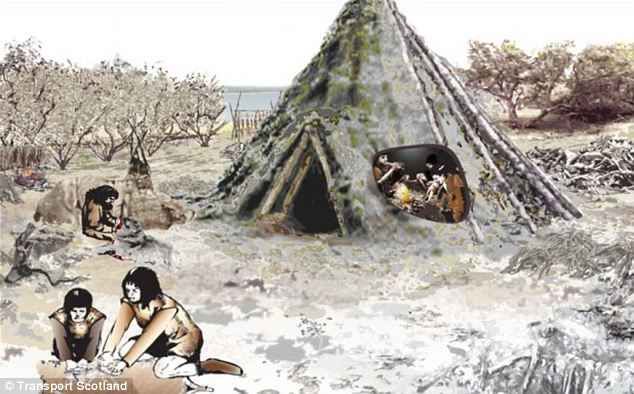SCOTLAND'S EARLIEST HISTORY
Archaeologists discover 10,000 year-old home - and reveal residents were partial to hazelnuts
A large oval pit measuring nearly seven metres and studded with post holes was all that remained standing of the home from the Mesolithic period. The dwelling was found in the path of the new Forth bridge and has been dated to around 8240 BC.
The holes would have held wooden posts supporting the walls and roof, which experts believe would have been covered with turf. Remains of several fireplace hearths were also discovered.
The ancient people who lived in the area were hunter gatherers and charred bone fragments on the site suggest they ate birds, fish, wild boar and possible deer. Large quantities of charred hazelnut shells were also found. The residents were among the first settlers in Scotland after the last glacial period (a time within an ice age marked by colder temperatures).
Archaeologists also recovered more than 1,000 flint artefacts including stone tools that would have been used for tasks including hunting, skinning and food processing.
Ed Bailey, Project Manager for Headland Archaeology, the company that carried out the works, said:
'The discovery of this previously unknown, and rare type of site has provided us with a unique opportunity to further develop our understanding of how early prehistoric people lived along the Forth.
'Specialist analysis of archaeological and paleo environmental evidence recovered in the field is ongoing. This will allow us to put the pieces together and build a detailed picture of Mesolithic lifestyle.'
Historic Scotland Senior Archaeologist, Rod McCullagh, said: 'This discovery and, especially, the information from the laboratory analyses adds valuable information to our understanding of a small but growing list of buildings erected by Scotland’s first settlers after the last glaciation, 10,000 year ago.
'The radiocarbon dates that have been taken from this site show it to be the oldest of its type found in Scotland which adds to its significance.'
